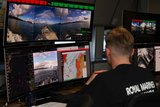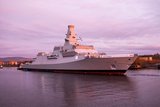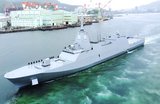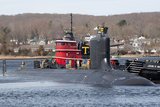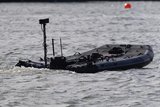Longbow missile demonstrates littoral target capabilities
Recent test firings have demonstrated that a shipboard-launched Longbow missile has the potential to be used to effectively counter fast-attack craft in the maritime environment.
The tests, conducted by the US Army, US Navy and supported by Lockheed Martin, were conducted near Eglin Air Force Base. They saw multiple US Army Longbow missiles fired from a launch fixture provided by the US Navy aboard a 65-foot surface craft.
According to Lockheed Martin, the launches represented a variety of progressively more complex scenarios, with the missiles successfully engaging multiple incoming high-speed boat targets at a range of six kilometers.
The results of the tests offer an efficient path forward for shipboard launches with a weapon already in US government inventory.
Hady Mourad, director of advanced programs, Lockheed Martin Missiles and Fire Control, said: ‘This was the second demonstration firing conducted by the army with Lockheed Martin assistance. These firings showed the capability of the existing Longbow missile in a new littoral threat environment, and also verified the vertical-launch capability of the missile. Earlier this year, we demonstrated the use of Longbow from an Apache helicopter against a representative littoral target.’
The fire-and-forget Longbow missile uses millimeter-wave guidance to lock onto targets before or after launch. The demonstrations were the first vertical launches of the Longbow missile and the first lock-on after launch of a Longbow missile against maritime targets.
Related Equipment in Defence Insight
More from Naval Warfare
-
![Hanwha wins Australian government approval to increase its stake in Austal]()
Hanwha wins Australian government approval to increase its stake in Austal
The contract would mean the two shipbuilders can collaborate strategically and enhance shipbuilding capabilities in Western Australia.
-
![Royal Australian Navy sizes up modernisation plans for new and existing capabilities]()
Royal Australian Navy sizes up modernisation plans for new and existing capabilities
The Australian navy is pushing ahead with its efforts to modernise its workforce and capabilities while balancing risky submarine upgrades, ageing Collins-class boats and a shrinking minehunter fleet. Head of navy capability RAdm Stephen Hughes updated Shephard on the force’s progress.
-
![UK to join US Navy’s Virginia-class submarine assembly effort to speed up construction]()
UK to join US Navy’s Virginia-class submarine assembly effort to speed up construction
The expansion of the Virginia-class submarine construction to UK shores could accelerate the project as US shipbuilders continue to fall short of delivery goals.
-
![US Navy seeks new sensors for the CH-53K King Stallion heavy-lift helicopter]()
US Navy seeks new sensors for the CH-53K King Stallion heavy-lift helicopter
The US Navy intends to publish a draft request for proposals in Q2 2026 and conduct an open competition for the supply of new electro-optical and infrared capabilities for the CH-53K heavy-lift helicopter.
-
![NATO naval exercises map out future USV requirements but raise questions on acquisition]()
NATO naval exercises map out future USV requirements but raise questions on acquisition
Uncrewed surface vessels have shifted from a desirable capability to a critical one for navies. But should these systems be bought outright, rented as a service or rapidly built using commercial off-the-shelf components?







